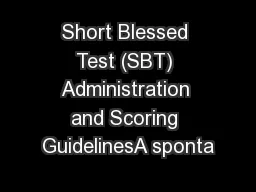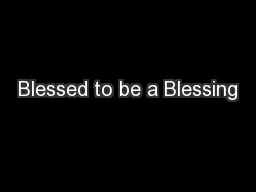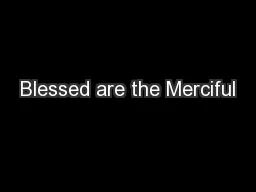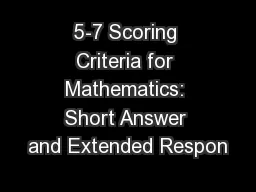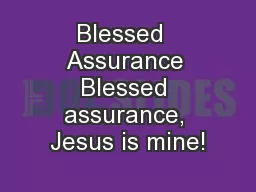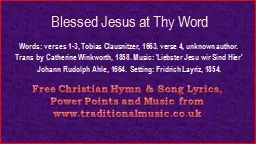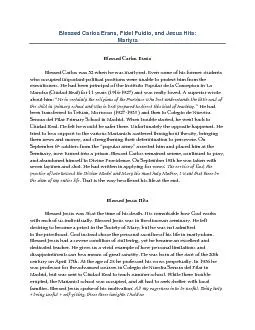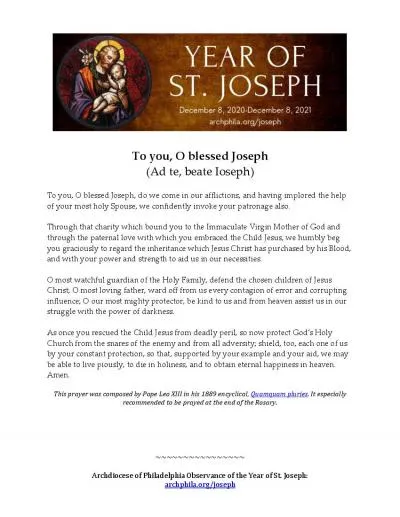PDF-Short Blessed Test (SBT) Administration and Scoring GuidelinesA sponta
Author : danika-pritchard | Published Date : 2016-10-17
These guidelines and scoring rules are based on the administration experience of faculty and staff of the Memory and Aging Project Alzheimer
Presentation Embed Code
Download Presentation
Download Presentation The PPT/PDF document "Short Blessed Test (SBT) Administration ..." is the property of its rightful owner. Permission is granted to download and print the materials on this website for personal, non-commercial use only, and to display it on your personal computer provided you do not modify the materials and that you retain all copyright notices contained in the materials. By downloading content from our website, you accept the terms of this agreement.
Short Blessed Test (SBT) Administration and Scoring GuidelinesA sponta: Transcript
Download Rules Of Document
"Short Blessed Test (SBT) Administration and Scoring GuidelinesA sponta"The content belongs to its owner. You may download and print it for personal use, without modification, and keep all copyright notices. By downloading, you agree to these terms.
Related Documents

